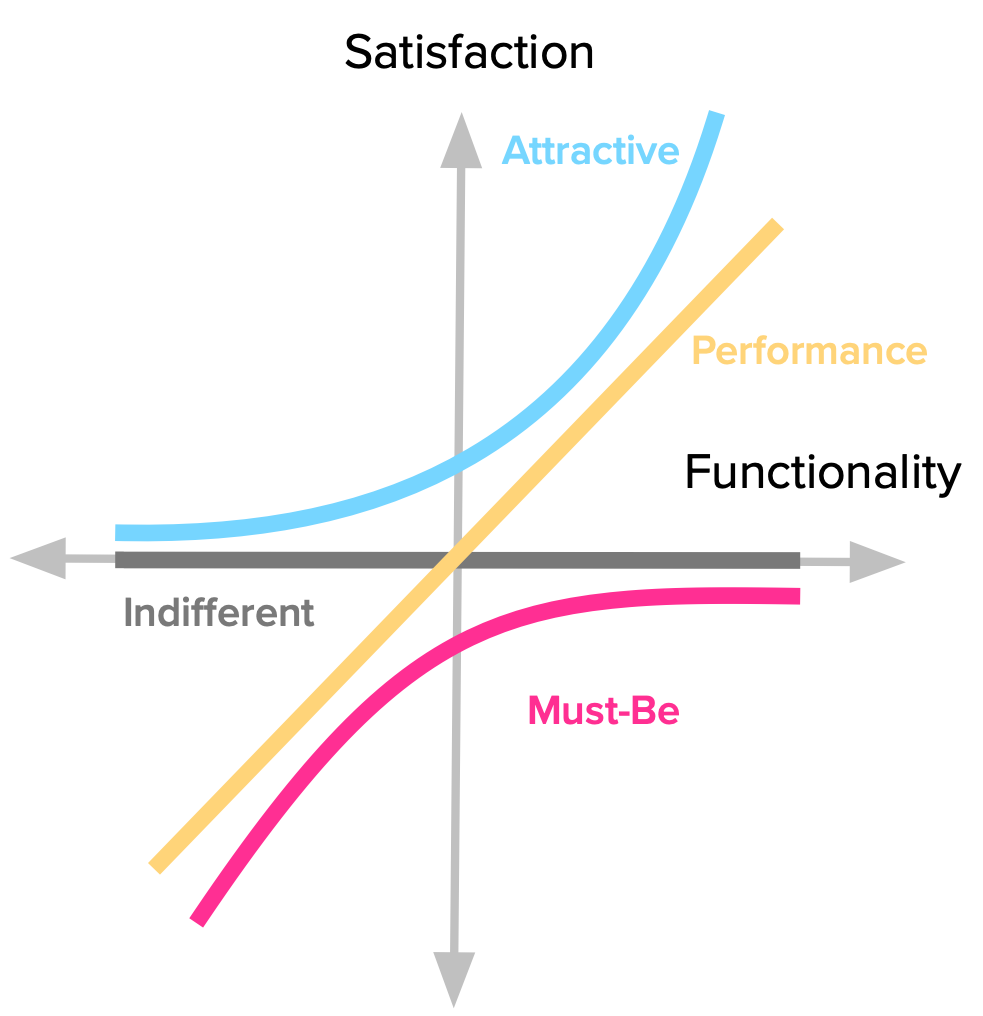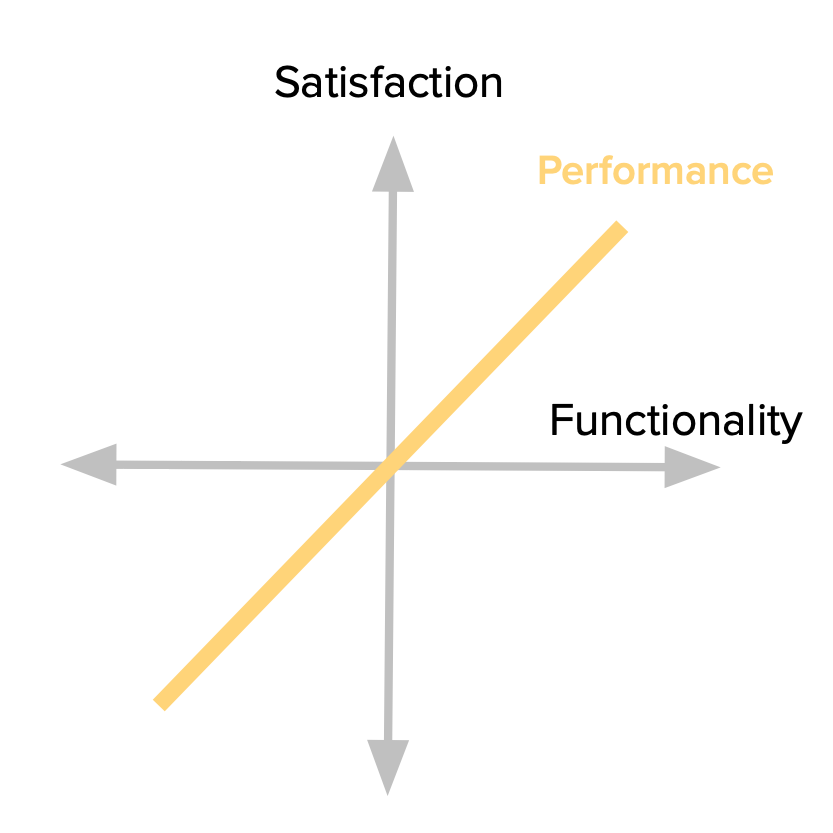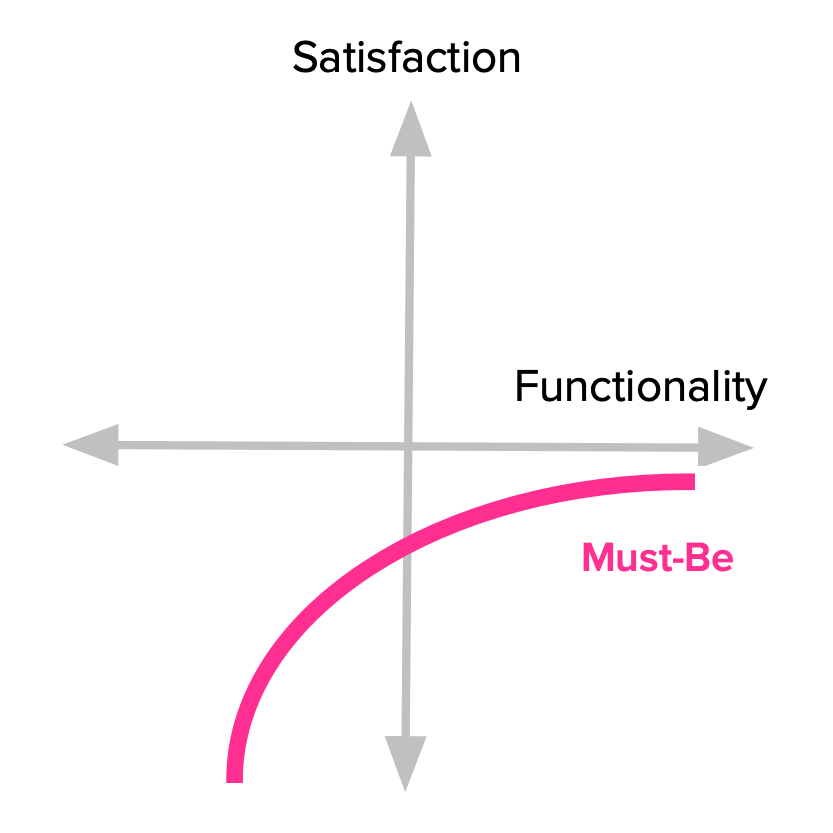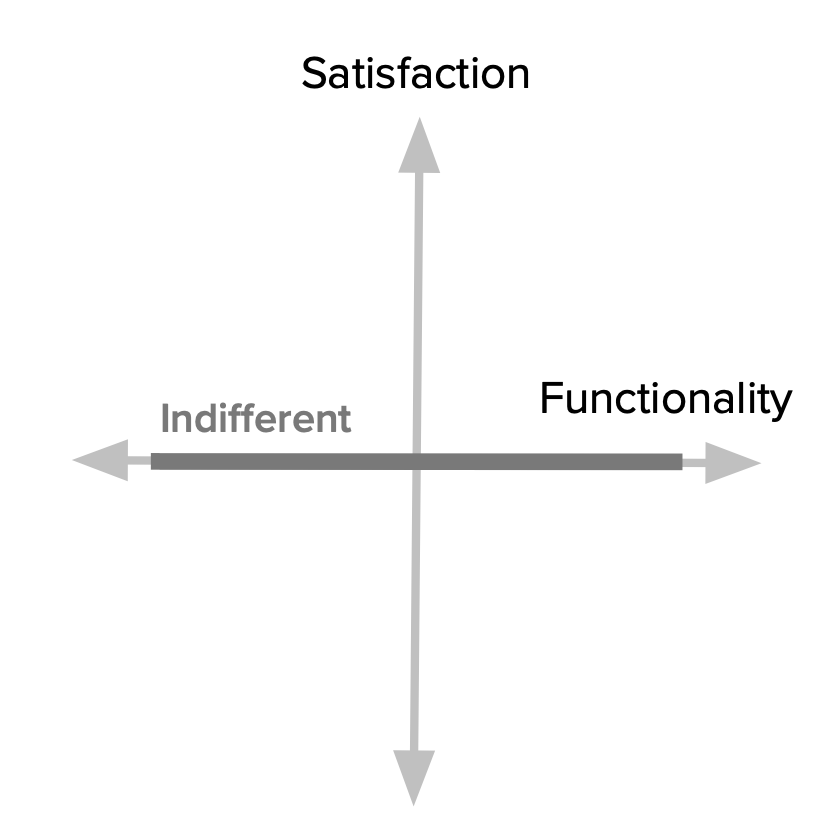
Josh BeckmanKano classifies features into four categories, depending on how customers react to the provided level of Functionality.
Some product features behave as what we might intuitively think that Satisfaction works: the more we provide, the more satisfied our customers become. Because of this proportional relation between Functionality and Satisfaction, these features are usually called Linear, Performance or One-Dimensional attributes in the Kano literature (I prefer Performance).
When you’re buying a car, its gas mileage is usually a Performance attribute. Other examples might be your internet connection speed; laptop battery life; or the storage space in your Dropbox account. The more you have of each of those, the greater your satisfaction.
Going back to the graphic representation for the model, we see the dynamics of customers’ reaction to this kind of feature. Every increase in functionality leads to increased satisfaction. It’s also important to keep in mind that the more functionality we add, the bigger the investment we have to make there (e.g. the team to build it, the required resources, etc.)
Other product features are simply expected by customers. If the product doesn’t have them, it will be considered to be incomplete or just plain bad. This type of features is usually called Must-be or Basic Expectations.
Here’s the deal with these features: we need to have them, but that won’t make our customers more satisfied. They just won’t be dissatisfied.
We expect our phones to be able to make calls. Our hotel room should have running water and a bed. The car should have brakes. Having any of these won’t make us happy, but lacking them will definitely make us angry towards the product or service.
Notice how the satisfaction curve behaves. Even the slightest bit of investment goes a long way in increasing satisfaction. But also notice how satisfaction never even reaches the positive side of the dimension. No matter what we invest in the feature, we won’t ever make our customers more satisfied with the product. The good news is that once a basic level of expectations is reached, you don’t have to keep investing in it.
There are unexpected features which, when presented, cause a positive reaction. These are usually called Attractive, Exciters or Delighters. I tend to prefer the term Attractive, because it conveys the notion that we’re talking about a scale. We can have reactions ranging from mild attractiveness to absolute delight, and still have everything fit under the “Attractive” name.
The first time we used an iPhone, we were not expecting such a fluid touchscreen interface, and it blew us away. Think of the first time you used Google Maps or Google Docs. You know, that feeling you get when experiencing something beyond what you know and expect from similar products.
Just remember that our brains don’t have to explode for something to fall under this category. It might be anything that makes you go: “Hey, that’s nice!”.
This is best explained graphically. Look how even some level of Functionality leads to increased Satisfaction, and how quickly it rises. This fact is key to keep a check on the investment we make on a given feature. Beyond a certain point, we’re just over-killing it.
Naturally, there are also features towards which we feel indifferent. Those which their presence (or absence) doesn’t make a real difference in our reaction to the product.
These features fall along the middle of the Satisfaction dimension (where the horizontal axis intersects it.) That means it doesn’t matter how much effort we put into them, users won’t really care. This is another way of saying we should really avoid working on these because they’re essentially money sinks.



